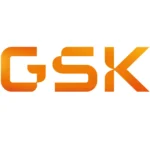NTT Docomo, Japan’s leading wireless carrier, announced plans to deploy a fleet of aerial telecommunications base stations by 2026, through a partnership with an Airbus-owned supplier, Aalto HAPS. This initiative, supported by an investment of up to $100 million from Docomo and three other investors, positions the Japanese carrier as a pioneer in commercial airborne telecommunications.
Aalto HAPS, specializing in high-altitude platform stations (HAPS), will receive funding primarily from Space Compass, a joint venture between NTT and satellite operator Sky Perfect JSAT. Alongside Docomo, Space Compass has formed strategic partnerships with Airbus and Aalto to drive this technology forward.
Field tests of the HAPS platforms are scheduled to begin in western Japan this year and extend into 2025, with commercial operations expected to start in 2026. These aerial platforms are designed to quickly restore communications following natural disasters such as earthquakes and typhoons. For instance, a single HAPS platform flying over Toyama Bay could provide network coverage across the entire Noto Peninsula, an area affected by a powerful earthquake earlier this year.
HAPS platforms, which operate autonomously in the stratosphere at altitudes of about 20 kilometers, can transmit telecommunication signals over a radius of up to 200 kilometers, vastly exceeding the 10-kilometer radius of terrestrial base stations. This makes them ideal for efficiently rolling out 5G networks. Unlike low-orbit satellites like Starlink, HAPS do not require specialized equipment for connectivity; smartphones and other devices can connect directly, minimizing lag due to their lower altitude.
Powered by solar energy, HAPS platforms face challenges in high-latitude regions with shorter daylight hours. However, Aalto’s Zephyr, a lightweight glider equipped with a high-capacity battery, has demonstrated prolonged flight capabilities, flying continuously for 64 days during a 2022 test in the U.S.
NTT Docomo aims to deploy HAPS across Japan by the end of the decade, particularly in remote islands and challenging terrains where terrestrial base stations are impractical. The company also envisions industrial applications in marine and mountainous regions. Expanding beyond Japan, Docomo is considering introducing the technology to emerging markets in Southeast Asia and other regions.
The global market for HAPS is projected to grow significantly, reaching $189 million by 2028, according to MarketsandMarkets. Japanese companies are at the forefront of HAPS development, with SoftBank planning to commercialize the technology by fiscal 2027.
In addition to the HAPS initiative, NTT has launched a new space business brand, NTT C89, aiming to generate 100 billion yen ($640 million) in revenue by fiscal 2033. Partnering with Amazon, NTT plans to leverage a constellation of low-orbit satellites to enhance global connectivity. NTT expects to launch two satellites this year for demonstration experiments in Japan.
This strategic move underscores NTT Docomo’s commitment to advancing telecommunications technology and bridging the digital divide, both in Japan and globally.




